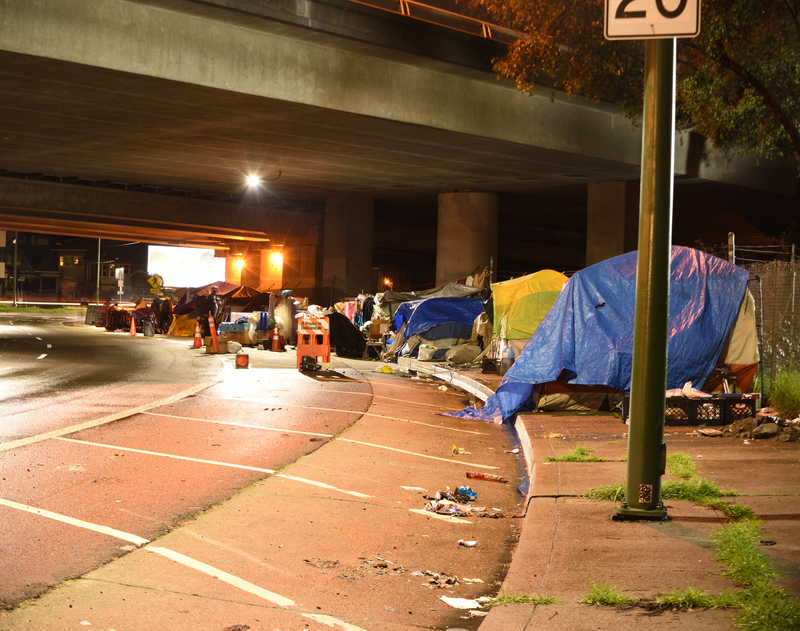
Photo: Blackkango | Dreamstime.com
US mayors seek better data to beat homelessness
20 January 2022
by Sarah Wray
In a recent survey of 126 US mayors, almost three-quarters (73 percent) said that voters hold them accountable for addressing homelessness, but only 19 percent believe they have substantial control over addressing the issue.
In the latest Menino Survey of Mayors, conducted by Boston University’s Initiative on Cities, leaders cited funding as their biggest barrier to tackling homelessness, alongside public opposition to new housing and shelters, limited staffing, poor coordination between different government and social service agencies, and lack of quality data.
“Mayors believe that their constituents care deeply about how they address homelessness. Yet, they perceive themselves as having little influence over the broader structural forces that create homelessness,” said Katherine Levine Einstein, Menino Survey Co-Author and Associate Professor of Political Science at Boston University. “Mayors are often forced to weigh the needs of unhoused people against resident and business complaints — all while managing a fragmented (and often underfunded) bureaucracy theoretically designed to manage the crisis.”
Defining success
Only 40 percent of mayors say reducing homelessness is how they “define success”. Forty-two percent highlight better housing, while 16 percent mention access to better social services. Eleven percent defined success in terms of reducing complaints from non-homeless residents. Ten percent do not have any clear definitions for success.
Mayors say they struggle to get the data they need to evaluate homelessness in their communities. While a minority (three percent) collect daily data, most rely on less frequent counts: 38 percent have access to annual data on homelessness and another 35 percent collect monthly data. Ten percent of mayors say that they have no access to city-level data. Several mayors highlighted city-county coordination problems as obstacles to acquiring municipal data. Other barriers include the fact that Continuums of Care boundaries often do not overlap with those of local governments. There are also challenges in co-ordinating with non-profits, and mayors noted that homeless residents can be hard to count because they are transient, and sometimes don’t want to share information.
Real-time data
Non-profit Community Solutions supported Boston University in the research to field a series of questions related to homelessness. The organisation leads Built for Zero, a movement of more than 90 US communities using a data-driven methodology to achieve “functional zero” where homelessness is continuously rare and brief. According to Community Solutions, 14 communities have so far reached this milestone for a population.
Jake Maguire, Principal at Community Solutions, told Cities Today: “We absolutely hear and empathise with mayors’ frustrations around lacking the data they need to reduce and end homelessness.
“It does not have to be this way. Communities across the country are moving towards quality, real-time, person-specific data on homelessness. And that is changing everything. At the individual level, that means they know everyone experiencing homelessness, as well as their individual needs. At a population level, they are able to understand what that number is at any given time, and how that number is changing over time, so they can assess whether investments and interventions are helping the community drive toward zero.”
He said mayors can play a powerful role by establishing a shared, measurable aim for ending homelessness at a population level and creating shared accountability across a collaborative, community-wide team.
“As a country, we have set up accountability for this problem in an unworkable fragmented way,” he said. “The funding alone comes down to more than five different agencies in a typical community. Mayors can use their convening power to bring together the key actors working to end homelessness as a single team, using the shared aim to align their efforts.”
Once this type of organisational alignment is in place, city Chief Data Officers could play a bigger role in homelessness efforts, Maguire said, noting: “We’ve seen the importance of local data champions in shifting culture and norms around the use of actionable, real-time data for goal-setting, measuring progress and catalysing system improvement.”
ARPA opportunity
Another survey finding revealed that over a quarter of mayors (28 percent) say they have no staff exclusively dedicated to serving people experiencing homelessness. Thirty-eight percent of mayors situate homelessness staff in their social services department, 14 percent in the housing department, and 22 percent in police departments.
Nearly four-in-five (78 percent) of mayors believe that American Rescue Plan Act (ARPA) resources will allow them to accomplish “transformative” aims – including those related to homelessness (21 percent), housing (15 percent) and social services (15 percent).








